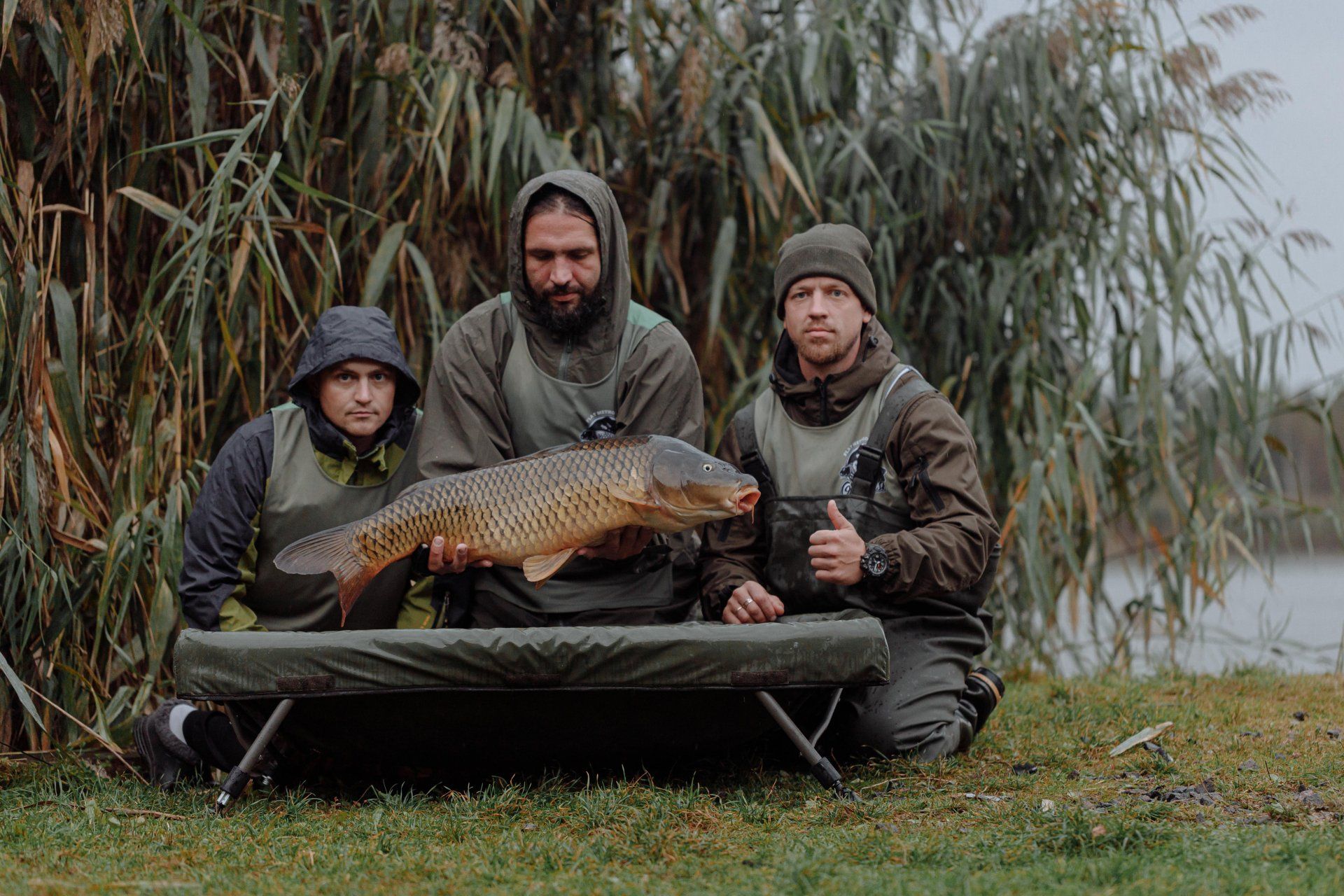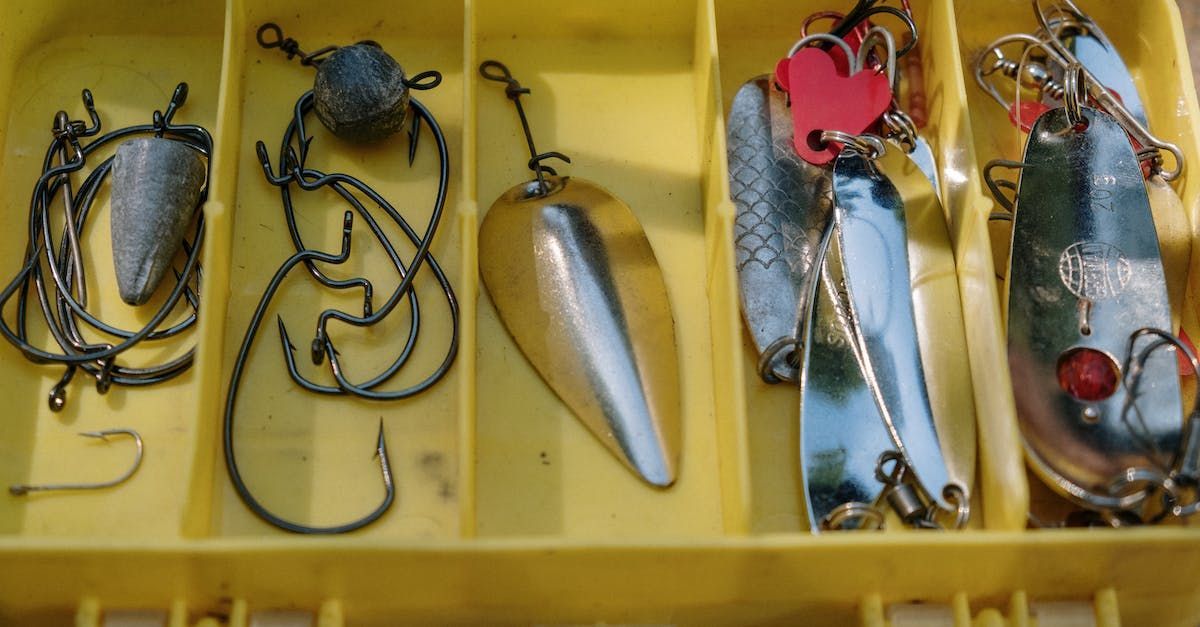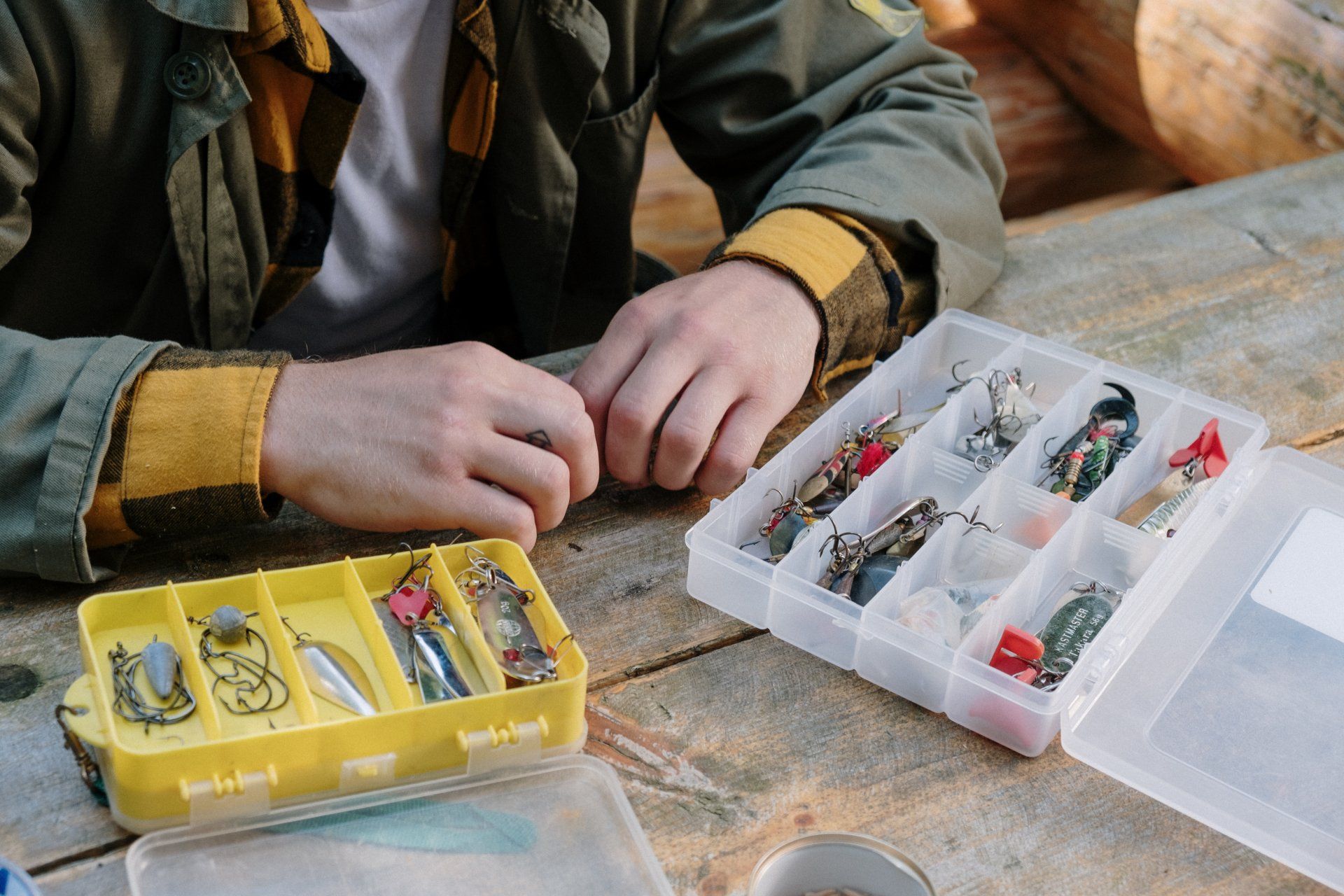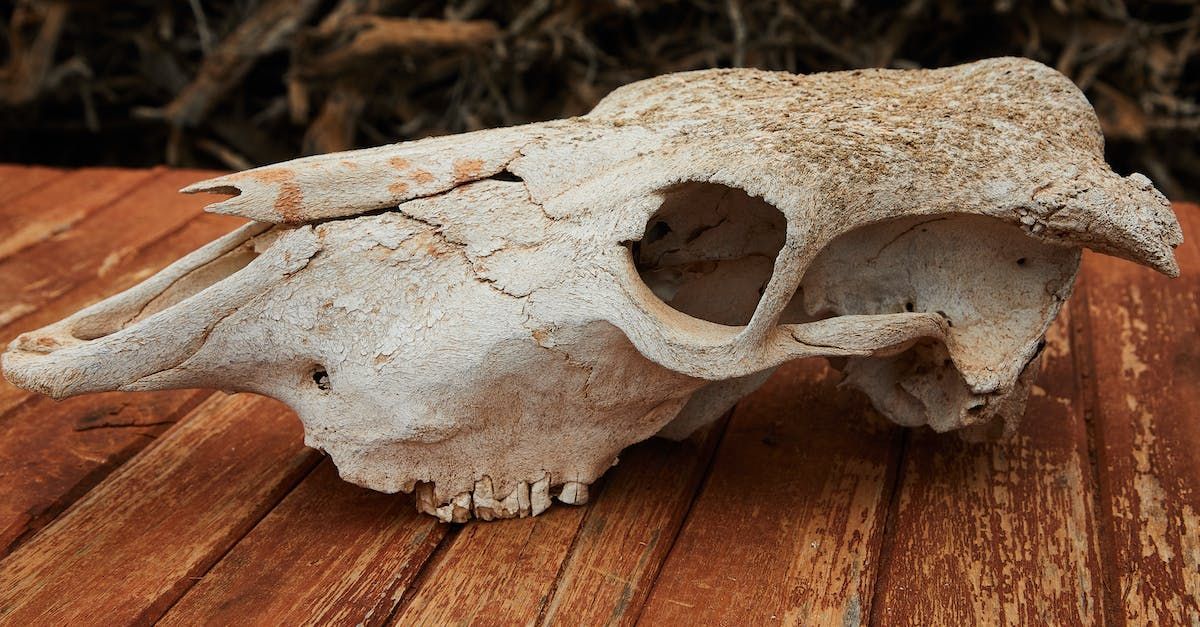Fishing
Fishing Tips, Supplies, Products
Fishing Game in the Midwest

The Midwest region of the United States offers a diverse range of fishing opportunities, with various game fish species inhabiting its lakes, rivers, and streams. The specific fish species you can target in the Midwest may vary by state and location, but here are some of the main fishing game species commonly pursued by anglers in the Midwest:
- Largemouth Bass: Largemouth bass are one of the most popular freshwater game fish in the Midwest. Anglers target them in lakes, ponds, rivers, and reservoirs using a variety of lures and techniques.
- Smallmouth Bass: Smallmouth bass are another sought-after bass species in the Midwest. They are known for their aggressive fighting abilities and are often found in clear, rocky waters.
- Walleye: Walleye are prized for their delicious fillets and are a popular game fish in many Midwest states. They are commonly found in lakes and rivers, especially in cooler water temperatures.
- Northern Pike: Northern pike are apex predators found in many Midwest waters. They are known for their aggressive strikes and can be challenging to catch due to their toothy mouths.
- Muskie (Muskellunge): Muskie are the "fish of 10,000 casts" and are a thrilling challenge for anglers. They are known for their large size and elusive nature.
- Trout: Various species of trout, including rainbow trout, brown trout, and brook trout, can be found in the cold, clear streams and rivers of the Midwest. They are often stocked in select locations to provide angling opportunities.
- Catfish: Catfish, including channel catfish, flathead catfish, and blue catfish, are abundant in Midwest rivers and lakes. They are known for their size and are often targeted using stink baits and live bait.
- Panfish: Panfish species such as bluegill, crappie, and perch are plentiful in Midwest waters. They are excellent targets for beginners and families.
- Carp: Carp are common in many Midwest waters and are known for their strength and size. They are often pursued by bowfishing enthusiasts.
- Sauger: Sauger are closely related to walleye and are found in many of the same waters. They are prized for their taste and are often caught by anglers targeting walleye.
- White Bass: White bass are a popular target for anglers in the Midwest, especially during their spring spawning runs in rivers.
- Sunfish: Various sunfish species, including pumpkinseed and longear sunfish, are abundant in Midwest waters and provide excellent angling opportunities for beginners.
Remember that fishing regulations and seasons may vary by state and location within the Midwest, so it's essential to check local fishing regulations and obtain the necessary licenses and permits before heading out to fish for these game species. Additionally, practicing catch-and-release when appropriate can help conserve fish populations and ensure quality fishing opportunities in the future.
Fishing Supply List

Essential Fishing Supplies:
Gearing Up for a Successful Angling Adventure
Fishing, a timeless and tranquil pursuit, allows us to connect with nature while seeking the thrill of the catch. Whether you're a seasoned angler or a beginner casting your first line, having the right fishing supplies is paramount for an enjoyable and successful fishing trip. In this article, we'll explore the essential fishing gear and supplies you'll need to make the most of your angling adventure.
Fishing Rod and Reel:
A fishing rod and reel are the foundation of your fishing gear. Choose a rod and reel combo that matches your intended fishing style and the type of fish you'll be targeting. Spinning reels and casting rods are versatile options for various types of fishing.
Fishing Line:
Select the appropriate fishing line for your fishing conditions and target species. Monofilament, fluorocarbon, and braided lines each have their advantages. Ensure your line is strong and has the appropriate pound test for your target fish.
Hooks, Baits, and Lures:
Hooks are critical for securing your catch. Different types and sizes of hooks are suitable for various fishing techniques. Baits, such as live worms or artificial lures, are used to attract fish. Lures come in various shapes, sizes, and colors, imitating the movement of prey to entice fish.
Fishing Tackle Box:
A tackle box keeps your fishing gear organized. It should have compartments for storing hooks, lures, bobbers, sinkers, and other small fishing accessories.
Fishing Accessories:
Include a variety of fishing accessories in your kit, such as:
- Bobbers or Floats: These keep your bait at the desired depth and signal when you have a bite.
- Sinkers: Sinkers help your bait reach the desired depth by adding weight to your line.
- Swivels and Snaps: These allow you to change lures and rigs quickly without retying knots.
- Pliers and Line Cutters: These are handy for cutting line, removing hooks, and crimping split shot.
- Needle Nose Pliers: Useful for extracting hooks from fish.
- Fishing Scissors: Perfect for trimming excess line and cutting braided line.
- Stringer or Cooler: To keep your catch fresh while you continue fishing.
Fishing Apparel:
Wear appropriate fishing apparel for comfort and protection from the elements:
- Fishing Hat: To shield your face from the sun.
- Sunglasses: Polarized sunglasses reduce glare and protect your eyes.
- Fishing Gloves: Protect your hands from sunburn and abrasion.
- Fishing Vest or Pack: Keep your essentials close at hand while wading or fishing from shore.
Fishing License:
In most places, you'll need a fishing license or permit to fish legally. Check with your local wildlife agency for licensing requirements and regulations specific to your area.
Safety Gear:
Safety should be a top priority while fishing. Always bring:
- Life Vest: If you're fishing from a boat or kayak.
- First Aid Kit: To handle minor injuries.
- Sunscreen: Protect your skin from harmful UV rays.
- Insect Repellent: Ward off pesky insects in bug-prone areas.
- Rain Gear: Be prepared for unexpected weather changes.
Fishing Rod Holder or Rest:
A rod holder or rest keeps your rod secure while you wait for a bite, allowing you to relax without constantly holding your rod.
Fishing Line Spooler (Optional):
If you need to change or respool your fishing line, a line spooler can make the process quicker and easier.
With these essential fishing supplies in your arsenal, you're ready to embark on a fishing adventure and increase your chances of landing the big one. Remember that each fishing trip may require adjustments to your gear, depending on the location, season, and the type of fish you're targeting. So, research your fishing destination, check local regulations, and enjoy the serenity and excitement of angling in the great outdoors.
Fishing Tackle Box Must Haves

A well-stocked tackle box is the key to a successful and enjoyable fishing trip. Whether you're a seasoned angler or just starting, here are the must-have items to include in your tackle box:
1)Assorted Fishing Lures:
- Crankbaits: These mimic injured fish and are ideal for predatory species like bass and pike.
- Soft Plastics: Include plastic worms, grubs, and creature baits for a versatile bait option.
- Spoons: Spoons are effective for a variety of species, including trout and salmon.
- Spinnerbaits: Spinnerbaits are known for attracting bass and other predatory fish.
- Jigs: Jigs are versatile and can be used in both freshwater and saltwater for a variety of species.
2)Hooks and Sinkers:
- Assorted Hooks: Carry a variety of hook sizes and types to match different baits and fish species.
- Split Shot Sinkers: These allow you to adjust the depth of your bait.
- Bullet Sinkers: Ideal for Texas rigging soft plastics.
- Egg Sinkers: Good for Carolina rigs and slip-sinker setups.
3)Fishing Line:
- Monofilament Line: Versatile and suitable for various fishing applications.
- Fluorocarbon Line: Known for its low visibility underwater, ideal for clear water conditions.
- Braided Line: Offers strength and sensitivity, great for heavy cover fishing.
4)Tools and Accessories:
- Pliers: Essential for removing hooks, cutting line, and other tasks.
- Line Clippers: Handy for quickly cutting line without using teeth.
- Fishing Scissors: Precise cutting of line and trimming bait.
- Knot-Tying Tools: Tools like a knot-tying card can help you tie reliable knots easily.
- Fishing Scale: To weigh your catch and record your fishing successes.
- Bait Threader or Bait Needles: Useful for rigging soft baits.
- Swivels and Snaps: Provide versatility for changing lures and rigs.
- Bobbers or Floats: Used to suspend bait at the desired depth.
5)Terminal Tackle:
- Snap Swivels: Prevent line twist and make it easier to change lures.
- Barrel Swivels: Useful for connecting line to leaders.
- Crimp Sleeves: Used to create secure connections with leaders.
- Wire Leaders: For fishing in areas with toothy predators like pike and muskie.
6)Bait and Lure Accessories:
- Artificial and Natural Baits: Include a selection of live bait (worms, minnows) and artificial baits like PowerBait, Gulp!, or scented soft plastics.
- Floatant and Sinkant: Use floatant to keep dry flies floating and sinkant to help nymphs and wet flies sink.
- Sharpie Markers: Useful for customizing lures by adding color or patterns.
- First Aid Kit: A small first aid kit with bandages, antiseptic wipes, and pain relievers can be helpful for minor injuries.
- Fishing License and Identification: Always have your fishing license and identification on hand to comply with regulations.
- Maps and Area Knowledge: Include maps of your fishing locations, or have a GPS or smartphone app for navigation and safety.
Remember that the contents of your tackle box can vary based on your fishing location, target species, and personal preferences. It's a good practice to regularly inspect and update your tackle box to ensure you have what you need for each fishing outing. Additionally, always check local regulations and consider catch-and-release practices to help conserve fish populations for future generations.
How to Choose the Right Fishing Rod
Lakes vs. Oceans
Fishing is a beloved pastime enjoyed by millions around the world. Whether you're casting a line in a tranquil lake or heading out to the open ocean, selecting the right fishing rod is crucial for success. In this article, we'll explore the different types of fishing rods and help you understand which ones are best suited for lakes and oceans.
Types of Fishing Rods:
1)Spinning Rods:
- Lakes: Spinning rods are versatile and well-suited for lake fishing. They work excellently for casting lightweight lures, live bait, or small jigs. Their ease of use makes them a popular choice for anglers of all skill levels.
- Oceans: Spinning rods are also suitable for ocean fishing, especially when targeting smaller or medium-sized fish. They are commonly used for inshore and nearshore fishing from piers, beaches, or boats.
2)Casting (Baitcasting) Rods:
- Lakes: Casting rods are ideal for targeting larger fish in lakes, such as bass or pike. They can handle heavier lines and lures and are often used for techniques like flipping, pitching, and trolling.
- Oceans: Baitcasting rods are commonly used in ocean fishing when targeting larger and more powerful species, including offshore trolling and deep-sea fishing.
3)Fly Fishing Rods:
- Lakes: Fly fishing is a popular method for catching trout in lakes. Choose a fly rod that matches the line weight required for your target species and the size of flies you plan to use.
- Oceans: Fly fishing in the ocean is typically reserved for specific species like bonefish, tarpon, and permit in shallow coastal waters.
4)Telescopic Rods:
- Lakes: Telescopic rods are versatile and portable, making them convenient for lake fishing, especially when you're on the move or fishing from the shore.
- Oceans: While less common for ocean fishing, telescopic rods can be used for light saltwater fishing from piers or nearshore areas.
5)Trolling Rods:
- Lakes: Trolling rods are less common in lakes but can be used when trolling for larger fish species like lake trout or salmon in deeper bodies of water.
- Oceans: Trolling rods are widely used in ocean fishing, particularly for trolling offshore and targeting species like marlin, sailfish, and tuna.
6)Surf Fishing Rods:
- Lakes: Not applicable for lake fishing.
- Oceans: Surf fishing rods are specifically designed for casting bait or lures into the surf from ocean shorelines. They are excellent for targeting species like surfperch, striped bass, and pompano.
Rod Selection Considerations:
- Fish Species: Consider the size and type of fish you're targeting, as well as their habitat (lake or ocean).
- Fishing Techniques: Think about the fishing techniques you plan to use, whether it's casting, trolling, fly fishing, or surf fishing.
- Location: Determine whether you'll be fishing in freshwater lakes or saltwater oceans, as this will affect the choice of materials and components for your rod.
Choosing the right fishing rod is essential for a successful day on the water, whether you're fishing in lakes or oceans. Consider the specific needs of your fishing trip, including the target species and fishing techniques, to select the most suitable rod for your adventure. With the right rod in hand, you'll be well-prepared to reel in the catch of a lifetime, whether it's a trophy bass in a serene lake or a mighty marlin in the vast ocean.


